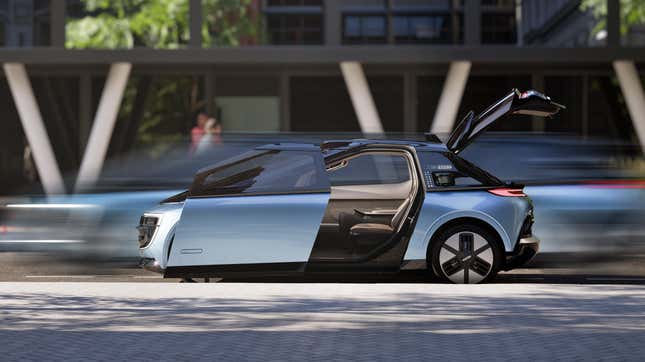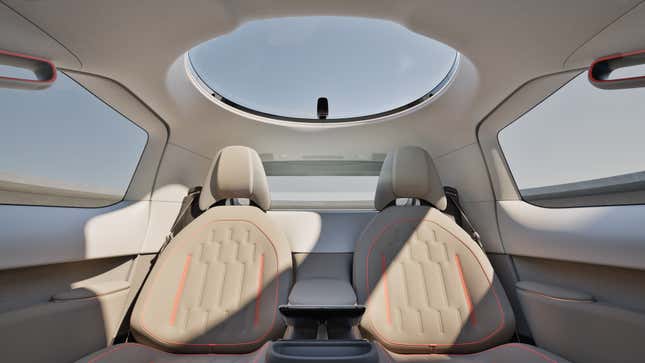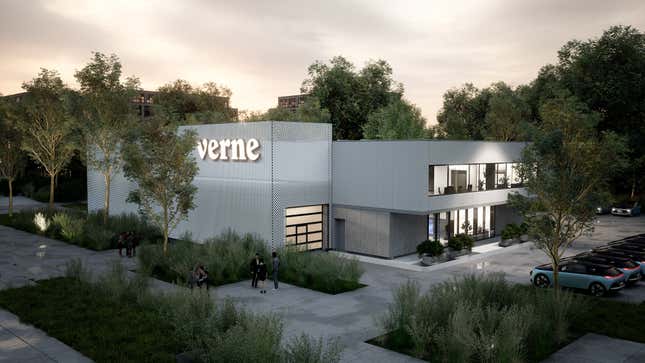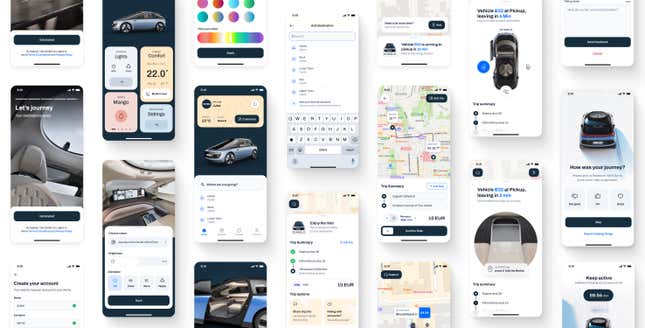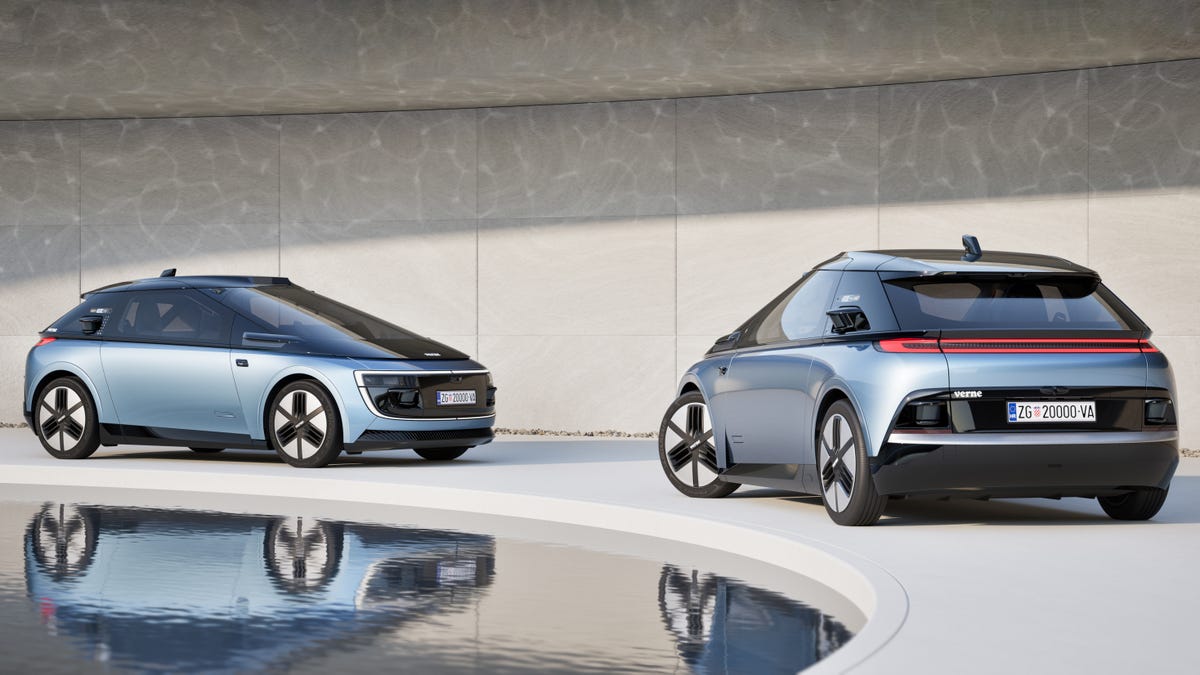Not even a full week after Bugatti unveiled its new V16 hybrid–powered Tourbillon, CEO Mate Rimac is unveiling another new car from another newly formed company of his, this one on the total opposite end of the spectrum. This is the Verne, a fully autonomous robotaxi run by former Rimac employees that is set to start service in 2026. Named after Jules Verne, the famed author who Rimac says “imagined humanity’s potential through amazing journeys,” the Verne has an endearing design and the engineering to back it up.
Mate Rimac co-founded Verne with two of his “closest colleagues” from Rimac: Marko Pejković, previously Rimac’s Chief Strategy Officer, is Verne’s CEO; and Adriano Mudri, previously Rimac’s Director of Design, is Verne’s Chief Design Officer. The car was revealed at the new Rimac Campus just outside Zagreb, Croatia, where the development work took place.
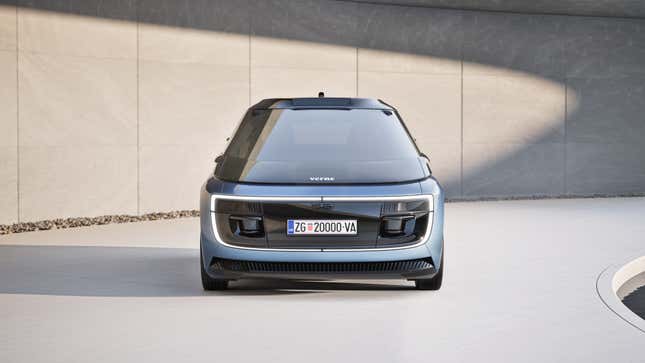
The Verne robotaxi rides on a purpose-built chassis, and it was developed in partnership with autonomy company Mobileye, using the Mobileye Drive autonomous systems platform consisting of cameras, lidar and radar sensors. Verne says the Mobileye platform is designed for a wide variety of locations, road types, weather conditions and even local driving styles. Mainly, the Verne is meant for denser urban environments, but it’ll be capable of more.
Unlike some other forward-thinking autonomous vehicles that look more dystopian than utopian, the Verne is downright cute, and it’s a shape we haven’t really seen before. (It’s much better looking than Waymo’s Jaguar I-Paces, too.) The Verne is a two-door compact car with a dramatically wedge-shaped front end, as if a Lamborghini nose was grafted onto a futuristic Renault Twingo. All of the autonomous sensors are well-integrated and prominently featured in the design, and its face looks like one big, illuminated smile. Mudri says the company removed “human-driven” vehicle features like side mirrors and windshield wipers, which improved aerodynamics and makes the car easier to clean.

A huge sliding door on each side opens to reveal a strictly two-seater cabin; the sliding doors were chosen as they don’t impede traffic and make it much easier to get in and out. Mudri says 90 percent of rides are hailed by only one or two people, so creating a two-seater allowed the designers and engineers to maximize the amount of interior space. In fact, the company says the Verne has more interior space than a Rolls-Royce, and the “extra-large” seats have five different modes, including one with a ton of seatback recline and legrests that deploy. It has a hatchback trunk that’s big enough for luggage or big grocery hauls, too.
There’s no steering wheel or pedals, with the “dashboard” mainly being a shelf upon which a curved 43-inch display sits. (The shelf itself has a pretty cool design, with rose gold accents and shapely speaker grilles.) The fixed center console between the seats has a touchpad for controlling the infotainment system, USB-C ports and wireless chargers, cupholders and more storage space. Also in the console is what the company calls the Median, the physical switch that’s used to start and stop the ride, aiming to give users a “sense of control” over the vehicle, plus buttons to open and close the doors.

Easily the best part of the interior is the “Halo ring” round sunroof, which Verne describes as being “nothing like you have ever seen before, a portal to new journeys and enables new views of the cities.” And I’ll give it to them, it does look awesome — in fact, the view out of the Verne in general seems great.
Either using the phone app or the in-car displays, users will be able to customize their rides to their liking, even before the car arrives. Climate control temperature and strength, in-car scent, and the window tint opacity can all be changed, and the car offers a number of gaming and media streaming apps. The ambient lighting offers different colors, brightness levels and animations, with some pre-set schemes inspired by Jules Verne books. It’s got a 17-speaker sound system, too.
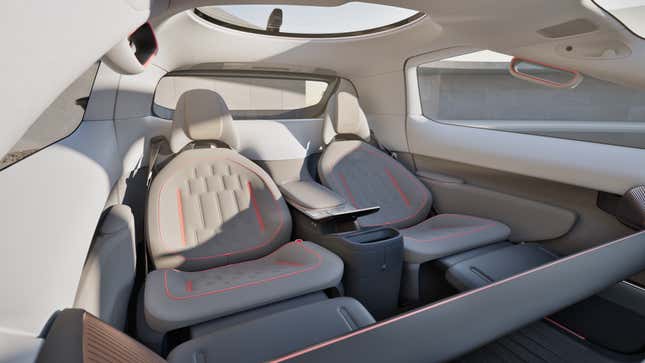
Rides will be hailed via the Verne app, which will show you the car’s real-time location and ETA. (Verne also says customers can “rest assured” their rides won’t be canceled.) The car’s rear pillars show the serial number and have a numberpad for users to input their codes, so no one will get in the wrong car by accident.
In each city that the company operates, there will be a main “Mothership” hub where the cars are charged, cleaned and inspected every day, the first of which will be in Zagreb in 2026. Verne says the UK, Germany and the Middle East will be next, and the company has signed agreements with 11 cities and is in negotiations with more than 30 worldwide. The Verne will be produced at a new facility in Zagreb that will achieve “large-scale production” for worldwide consumption. Meanwhile, Tesla has yet to reveal anything about its alleged robotaxi, with Musk remaining mum on the topic for a while now.
